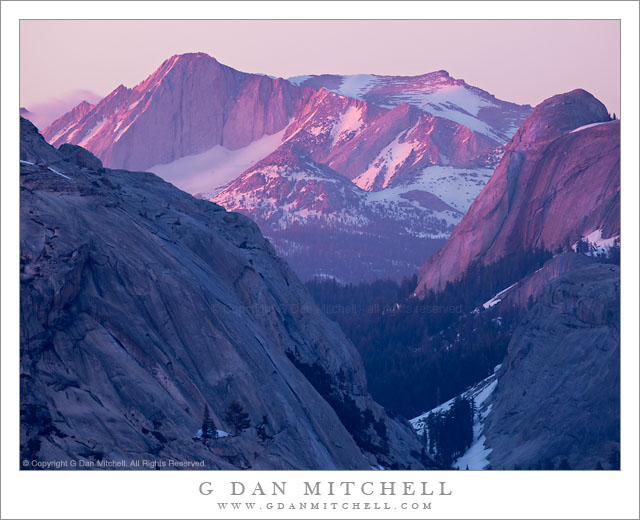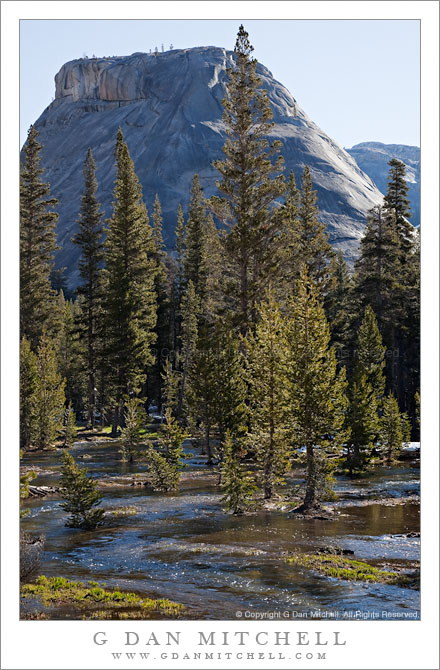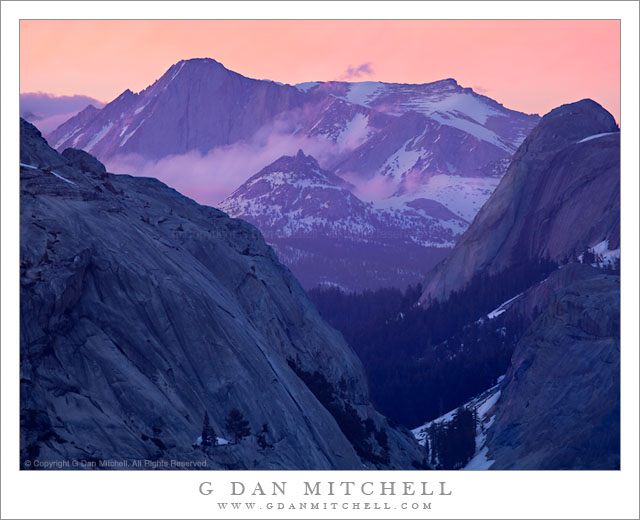Last Light, Mount Conness. Yosemite National Park, California. June 18, 2011. © Copyright G Dan Mitchell – all rights reserved.
The final evening alpenglow illuminates the summit ridge of Mount Conness and the west face of Medlicott Dome in the Yosemite National Park high country.
This will be my final photograph of Mount Conness from the evening of June 18, the day that Tioga Pass Road opened this year and the day of one of the most spectacular Yosemite high country sunsets in recent memory. It will be the final both in the sense that I think I’ve now shared the best of the group of images of this sunset and in the sense that it was literally my final exposure of the evening.
The short back-story is that what started out as a fairly unimpressive evening (at least in the photographic sense) transformed over a short period into something extraordinary as the sun dropped to the horizon west of the Sierra and illuminated the clouds from below, creating rare and very special alpenglow conditions over a wide area of the Sierra. (During the week that followed quite a few people commented on this amazing light, which they had witnessed from locations as distant as Mono Lake on the east side and the Central Valley to the west.)
When I made this photograph the show was coming to an end. At this point the sun had already set a few minutes earlier – the exposure was made around 8:45 p.m. – and the light was low enough to require a six-second exposure. While it may seem like Mount Conness (the tallest peak near the left on the skyline) and other features are receiving direct sunlight, this is actually the remaining post-sunset glow in the western sky.
G Dan Mitchell Photography
Flickr | Twitter (follow me) | Facebook (“Like” my page) | 500px.com | LinkedIn | Email
Text, photographs, and other media are © Copyright G Dan Mitchell (or others when indicated) and are not in the public domain and may not be used on websites, blogs, or in other media without advance permission from G Dan Mitchell.



